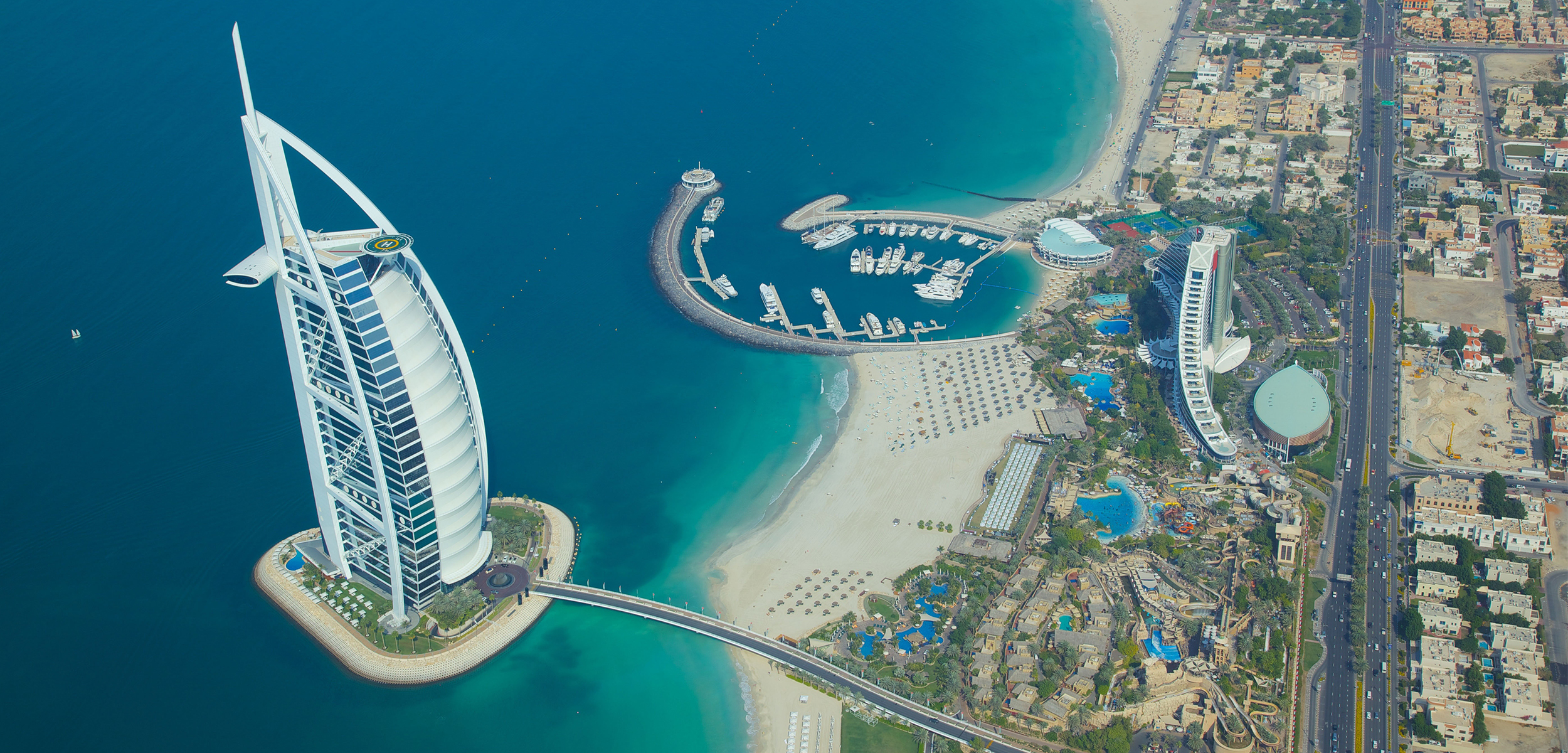Cities Are Rapidly Reclaiming Land at Risk of Extreme Sea Level Rise
People are building more and more land—a growing proportion of which is for luxury developments. It’s putting the rest of us at risk of flooding.
Article body copy
As the sea rises and the population booms, builders around the world are in a race to transform coastal bays and shallow seas into new land. Yet don’t mistake this rush of land reclamation as a response to the challenges we face. “It’s built for rich people,” explains Dhritiraj Sengupta, a physical geographer at England’s University of Southampton. Sengupta’s latest research shows there’s been a huge increase in the use of reclaimed land for luxury hotels, shopping areas, and high-end living spaces—developments designed to boost a city’s global reputation.
Dubai, in the United Arab Emirates, is a good example of this prestige building, Sengupta says. Tourism and economic development—especially to lure a wealthy clientele—has driven most of the building boom in Dubai. But it also highlights the issues with reclaimed land. The World in Dubai, a world map–shaped artificial archipelago and one of the largest examples of luxury reclamation, covers around 50 square kilometers. But development on the islands has stalled, and there are claims it’s already washing away.
Land reclamation—dumping sand, rocks, and other materials along coastal areas and building structures like sea walls to keep it all in place—is not new. Many metropolises, like New York City in New York and Mumbai in India, are built on reclaimed land, as are large swaths of some countries, like the Netherlands. But what is striking about recent land reclamation, Sengupta says, is the pace. “Cities are growing rapidly,” he says.
Using satellite imagery to analyze the growth of 135 coastal cities with at least one million residents between 2000 and 2020, Sengupta found that 106 cities have expanded into the sea. In total, these 106 cities have added more than 2,530 square kilometers of land—an area the size of Luxembourg. Asia is leading this land grab, accounting for 98 percent of the growth.
Shanghai, China, alone has reclaimed 350 square kilometers of land, while Colombo, Sri Lanka, built 100 square kilometers in just four years. Elsewhere, cities in South Korea, United Arab Emirates, Saudi Arabia, and Singapore all added at least 30 square kilometers to their coasts over the past two decades.
But when Sengupta compared his analysis with data from the Intergovernmental Panel on Climate Change, he found that more than 70 percent of this new land will likely be underwater by 2100.

Utrecht University engineer Jaap Nienhuis says reclaimed land is often created on coastal environments like seagrass meadows, reefs, and sandbanks, which destroys these natural barriers to sea level rise and storm surges. Photo by Oliver Förstner/Alamy Stock Photo
Jaap Nienhuis, an expert in coastal change at Utrecht University in the Netherlands who was not involved in the research, says most reclamation projects “are going to suffer with a lot of flooding issues by the end of the century.” The issue is a lack of long-term thinking, he says. “A lot of these projects are based on timescales that are much shorter than the end of the century. They get funding, and they make plans for perhaps 30 years.”
Even on shorter timescales, the expense of creating and maintaining reclaimed land already appears to be catching up with developers. Reclaimed land is costly to build and maintain. Sand, for example, the prime ingredient of new land, is tough to come by. And once the new land is in, developments on reclaimed land often require repeated imports of fresh sand and their own desalination plants to provide residents with fresh water, as well as regular subsidence checks and maintenance on structures like sea walls.
Sengupta says the satellite imagery shows many examples of half-built buildings on patches of new land, particularly in China, that have stalled for months. He adds that there are also lots of finished developments that no one is buying.
Reclaimed land causes problems for those living nearby, too, Sengupta says. Land reclamation projects can change coastal currents leading to flooding in nearby areas. Sea walls, similarly, can redirect tides and storm surges, eroding and flooding land near a wall’s end.
A prominent example of this splash damage is the Eko Atlantic luxury development in Lagos, Nigeria. Built on 10 square kilometers of reclaimed land, Eko Atlantic is surrounded by an 8.5-kilometer-long sea wall known as the Great Wall of Lagos. While the developers say the barrier will protect Eko Atlantic and parts of the surrounding city from the Atlantic Ocean, others say its construction has diverted tides and storm surges, causing devastating erosion in nearby communities.
Aside from creating new hazards for coastal residents, the surge of expensive reclamation projects will put a burden on governments, Nienhuis says. Luxury reclamation efforts “are often private projects,” he says. “But then they experience issues with sea level rise, and they go to the government and say, Well, we have all this investment, you need to protect it.”
The takeaway, says Sengupta: “Never buy on reclaimed land. With the climate emergency, it is time to retreat from these major coastal hotspots of climate change.”

